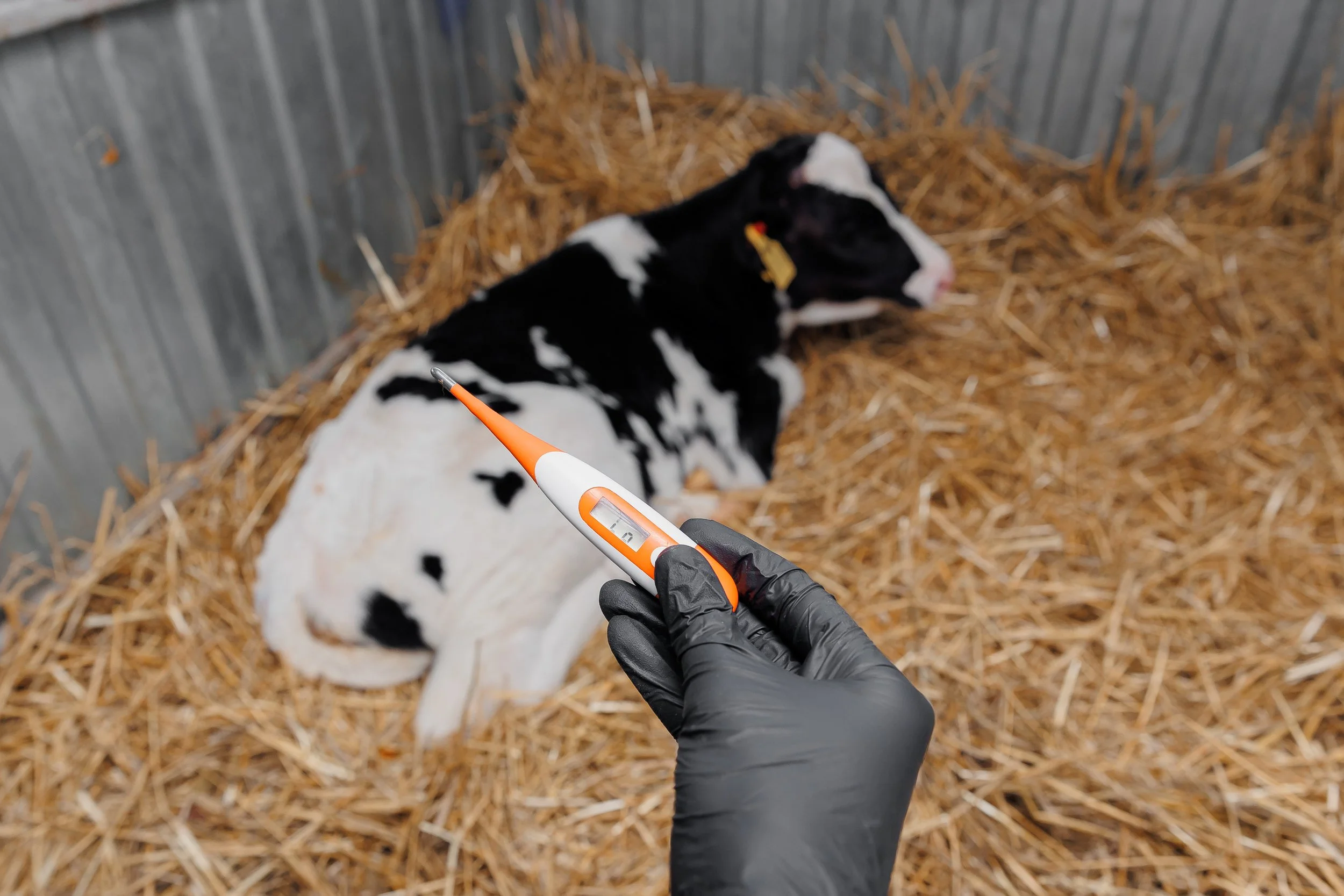The First Week of Life: A Veterinarian’s Perspective
When it comes to raising baby calves, there are some core fundamentals that absolutely need to happen in their first week after birth to ensure a healthy, productive lifetime. I often joke that “calves are born trying to die.” Newborn calves have no cellular-level immunity; very limited energy reserves to regulate their body temperature; and can become dehydrated in a matter of a few hours.
While they are born with natural immune barriers -- things like hair, skin, mucus, saliva, and tears -- calves can become very quickly challenged if environmental conditions overpower those defenses. It is up to us, as their caretakers, to help them overcome these physical challenges for a healthy start in life.
Another saying that makes sense when it comes to baby calves is that “common things happen commonly.” We sometimes get caught up in trying to find the latest, greatest additive or vaccine to keep calves healthy, when they really just need solid, basic, consistent care. That includes some extra steps if they are transported to an off-site rearing facility, as is true for many calves today.
Those basics include:
(1) Colostrum care and delivery – We have not been able to out-do the cow in terms of providing perfect immunity to her baby. A complete colostrum program involves not only getting it into the calf, but also harvesting it hygienically; testing for quality; and chilling, storing, and thawing it properly. Even calves that receive colostrum can have failure of passive transfer (FPT) of immunity if the colostrum program is mediocre, and many of those FPT calves won’t make it to productive adulthood.
(2) Navel care – As soon as a calf is born, the navel should be dipped in 7% tincture of iodine (NOT an iodine-based teat dip). That wet umbilical cord is literally a disease wick after birth, and can carry infective pathogens on a direct highway to the liver. From there, infection can be easily dispersed to the blood, organs, and joints, causing septicemia that is very difficult to treat.
Checking navels routinely can help detect early infections that may respond better to treatment. For transported calves, that means examining the navel of every calf as it comes off the truck, and daily for the next 3-5 days. Often when a very young calf seems “off” and is not drinking a bottle, it is because of a navel infection. Routinely checking navels becomes a standard part of the physical examination of incoming calves on well-managed farms.
(3) Temperature checks – You can’t adequately manage baby calves without a thermometer. Taking its temperature should be the first step in helping any calf that appears sick. It also should be standard practice for every calf as they are received from a transport truck. A fever may be the first indication that a calf is fighting an infection. Daily temperature checks are also necessary for treated calves to assess whether or not the treatment is working.
Taking its temperature should be the first step in helping any calf that appears sick.
(4) Environmental attention -- A clean, dry, well-bedded maternity space is the first measure to support calves’ successful launch into the outside world. After that, it takes fastidious attention to calf housing so calves are living in a dry, well-ventilated space that is neither too hot nor too cold. Many different housing systems can work, as long as those fundamentals are covered.
(5) Hydration – Calves won’t die from one missed meal, but they will die from dehydration. That’s why it is so important to feed transported calves immediately before they are placed on the truck, and immediately again when they are received on the other end. Whether those feedings are electrolytes or milk/milk replacer is highly weather-dependent. In hot conditions, they will likely benefit most from electrolytes on the receiving end. In the wintertime, they need the energy and nutrients from milk or milk replacer. Effective hydration depends on being tuned into the calf’s needs in every situation.
When baby calves get sick and die, the “common things” are nearly always that they have a fever, are dehydrated, or are either too hot or too cold. In most cases, it’s probably a combination of those factors.
Care in the first week of life is paramount to blueprinting calves’ success in the next 6 weeks of life. If they have a rough first week, you can predict that they also won’t be doing well 6 weeks later. Again, perfecting that first week does not come out of a bottle or a bag. It comes from attention to detail in providing those babies with the comfort, hygiene, and nutrition they need to succeed.




When it comes to raising baby calves, there are some core fundamentals that absolutely need to happen in their first week after birth to ensure a healthy, productive lifetime.